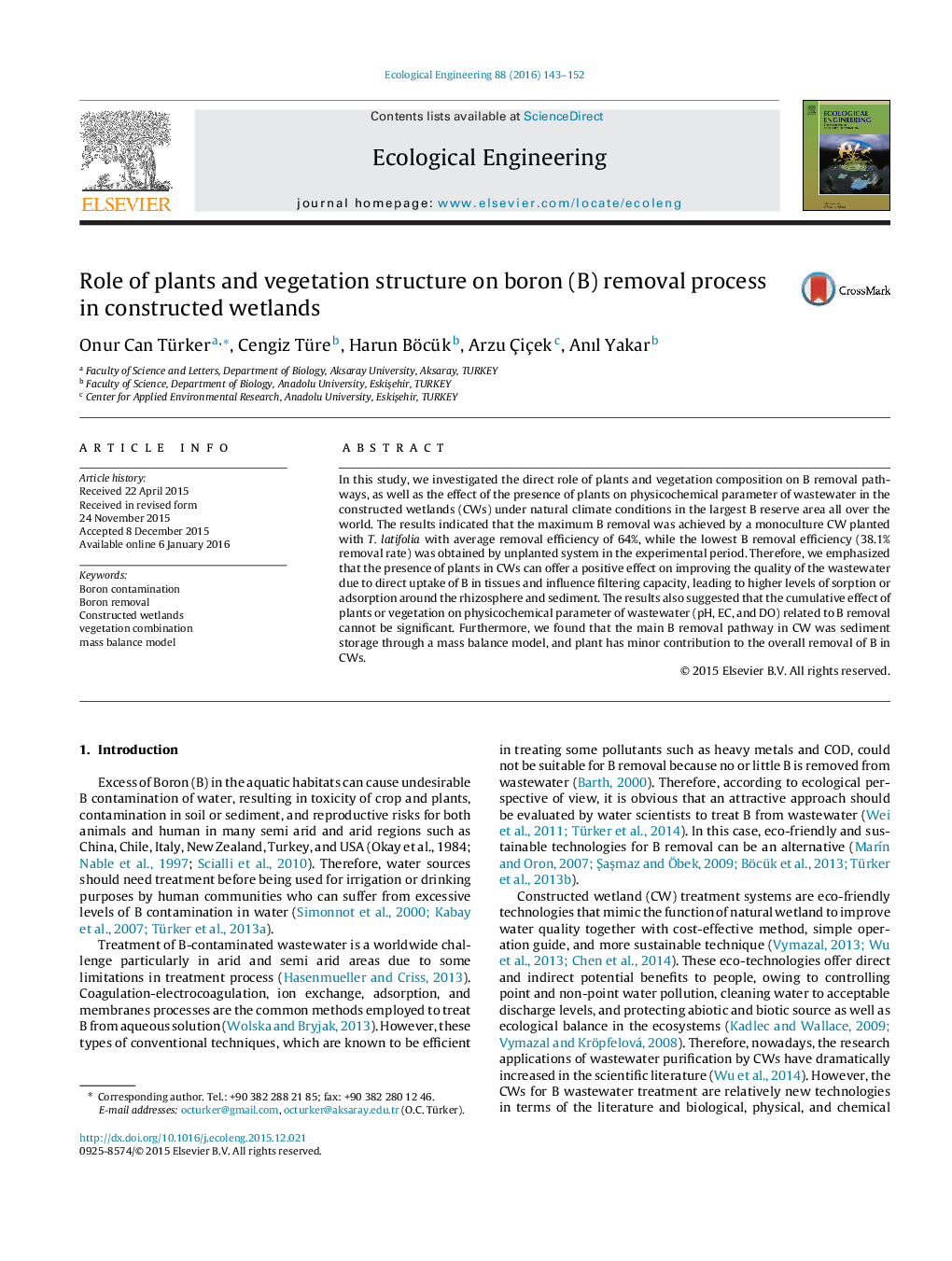| Article ID | Journal | Published Year | Pages | File Type |
|---|---|---|---|---|
| 6301545 | Ecological Engineering | 2016 | 10 Pages |
â¢We investigated role of plants on Boron (B) removal in constructed wetlands (CWs).â¢The presence of plants in CWs had positive effect for better B filtering capacity.â¢The plants can absorb B from wastewater and play a direct role.â¢The lowest B removal efficiency (38.1%) was obtained by the unplanted system.â¢We found that main B removal pathway in CWs was sediment storage.
In this study, we investigated the direct role of plants and vegetation composition on B removal pathways, as well as the effect of the presence of plants on physicochemical parameter of wastewater in the constructed wetlands (CWs) under natural climate conditions in the largest B reserve area all over the world. The results indicated that the maximum B removal was achieved by a monoculture CW planted with T. latifolia with average removal efficiency of 64%, while the lowest B removal efficiency (38.1% removal rate) was obtained by unplanted system in the experimental period. Therefore, we emphasized that the presence of plants in CWs can offer a positive effect on improving the quality of the wastewater due to direct uptake of B in tissues and influence filtering capacity, leading to higher levels of sorption or adsorption around the rhizosphere and sediment. The results also suggested that the cumulative effect of plants or vegetation on physicochemical parameter of wastewater (pH, EC, and DO) related to B removal cannot be significant. Furthermore, we found that the main B removal pathway in CW was sediment storage through a mass balance model, and plant has minor contribution to the overall removal of B in CWs.
Graphical abstractDownload high-res image (163KB)Download full-size image
